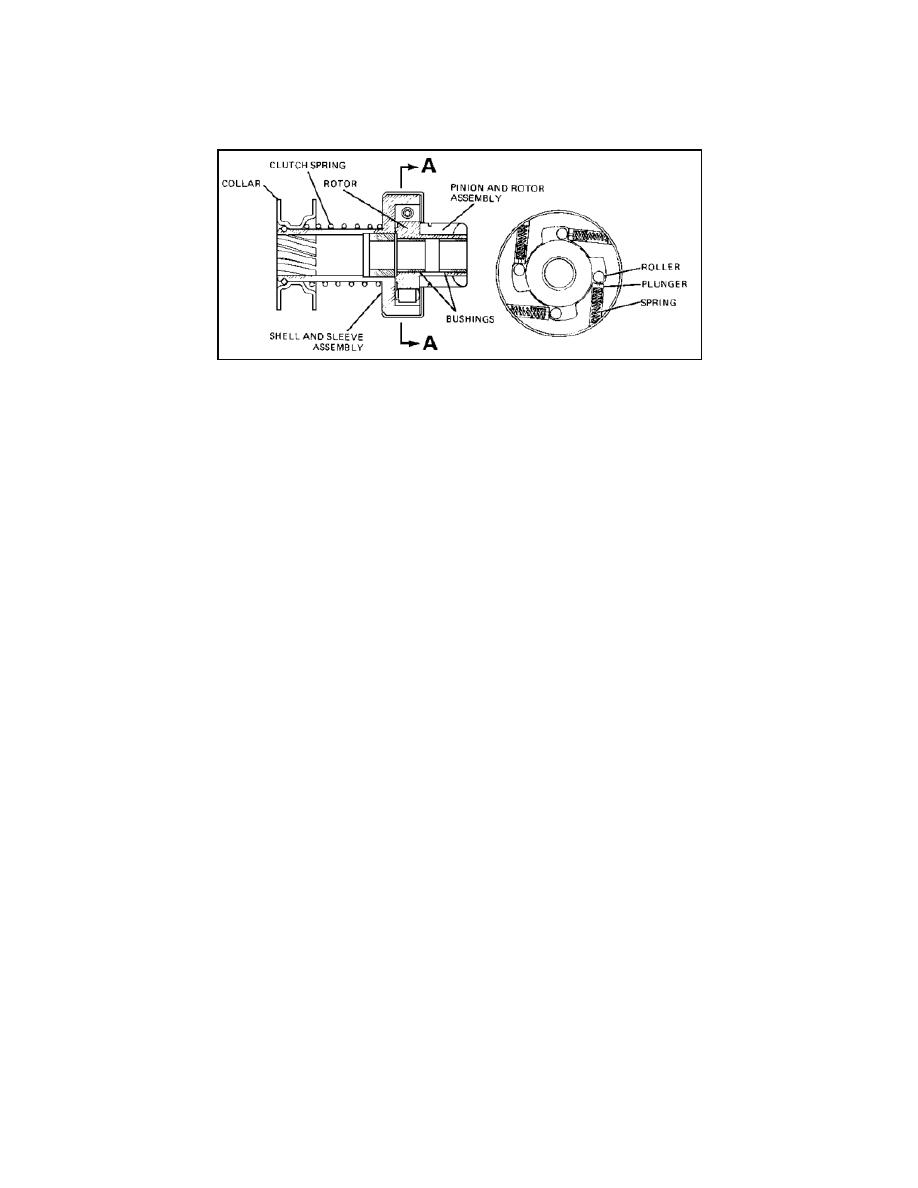
Lesson 2
FIGURE 21. OVERRUNNING CLUTCH.
Now look at the end view of the overrunning clutch, which is really a one-way clutch. It can drive
in one direction, but not the other. The outer shell is part of the splined sleeve, so it rotates when
the starter armature rotates. The only connection between the shell and the rotor are the four
spring-loaded rollers between them. Notice the rollers are in slots in the sleeve. They can move
back and forth in the slots. The slots are tapered slightly. When the sleeve starts to rotate, the
rollers move in their tapered slots to a point where they become wedged (jammed) between the
sleeve and the rotor. Then the whole clutch turns as a single unit. When the engine cranks, the
rollers are forced to move the other way in their slots, because the pinion and rotor are now
traveling faster than the overrunning clutch sleeve.
You can easily test the action of the clutch by gripping the sleeve with one hand and the pinion
with the other. Try to turn the pinion in either direction. You will find you can turn it one way,
but when you try to turn it the opposite way, it locks. In fact, if you can turn it both ways, it is
defective and must be replaced.
A shift lever (also called a yoke lever) is used with the overrunning clutch to shift the starter pinion
into mesh with the flywheel gear. The lever may be operated manually through linkage or by an
electromagnet.
41




 Previous Page
Previous Page
